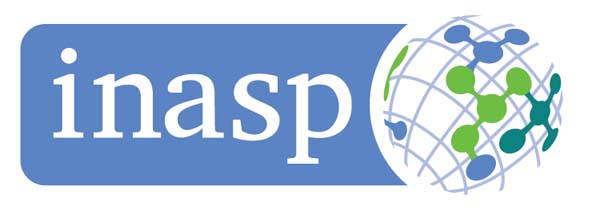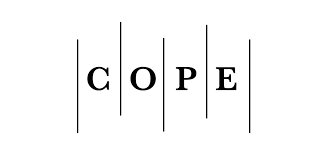SMARTPHONE APPLICATIONS FOR CONTACT TRACING IN COVID-19 EPIDEMIC: A SYSTEMATIC REVIEW
DOI:
https://doi.org/10.29304/jqcm.2021.13.2.818Keywords:
Smartphone applications, Mobile apps, COVID-19, Epidemic, Contact tracingAbstract
The great spread of the COVID-19 Pandemic and its effect on lifestyle around the world has led countries and organizations to accelerate the design or use of mobile health systems and applications to tackle and monitor the outbreak. Digital contact tracing applications have been proposed to automatically warning individuals at risk of infection and exposure. This systematic analysis discusses the various types of mechanisms and systems used in applications for digital contact tracing including Centralized, Decentralized, or Hybrid, in addition to, the used communication technologies such as Bluetooth, GPS, WiFi, and others, with a focus on user privacy and the efficiency of dealing with the extracted data. Four databases were scanned (IEEE Xplore, ScienceDirect, Web of Science, and PubMed) between 2015 and 2020. To review the collected 636 papers, precise exclusion criteria and selection strategies were applied. Only seven papers have been thoroughly analyzed and included in this study. The results in all papers have been presented to identify gaps and issues to supply an overview of the main aspects that need to be included and resolved in mobile applications that will be built to effectively restrict the spread of this pandemic and preserve full user privacy.
Downloads
References
[2] WHO. WHO Director-General’s opening remarks at the media briefing on COVID-19 - 11 March 2020. https://www.who.int/director-general/speeches/detail/who-director-general-s-opening-remarks-at-the-media-briefing-on-covid-19---11-march-2020 (2020).
[3] Emily Cameron-Blake, Helen Tatlow, Laura Hallas, S. M. Coronavirus Government Response Tracker | Blavatnik School of Government,Oxford COVID-19 Government. https://www.bsg.ox.ac.uk/research/research-projects/coronavirus-government-response-tracker (2020).
[4] Douglas, M., Katikireddi, S. V., Taulbut, M., McKee, M. & McCartney, G. Mitigating the wider health effects of covid-19 pandemic response. BMJ 369, (2020).
[5] Gallagher, J. Covid: Why is coronavirus such a threat? - BBC News. https://www.bbc.com/news/health-54648684 (2020).
[6] European Centre for Disease Prevention and Control. Contact tracing: public health management of persons, including healthcare workers, who have had contact with COVID-19 cases in the European Union – third update. https://www.ecdc.europa.eu/en/covid-19-contact-tracing-public-health-management (2020).
[7] WHO. WHO | Public health surveillance, Immunization, Vaccines and Biologicals. https://www.who.int/immunization/monitoring_surveillance/burden/vpd/en/ (2020).
[8] WHO. Contact tracing in the context of COVID-19: interim guidance, 10 May 2020. https://apps.who.int/iris/handle/10665/332049 (2020).
[9] WHO. Contact tracing. https://www.who.int/news-room/q-a-detail/contact-tracing (2020).
[10] Ish, P., Agrawal, S., Goel, A. D. & Gupta, N. Contact tracing: Unearthing key epidemiological features of COVID-19. SAGE Open Med. Case Reports 8, 2050313X2093348 (2020).
[11] Hernández-Orallo, E., Manzoni, P., Calafate, C. T. & Cano, J. Evaluating How Smartphone Contact Tracing Technology Can Reduce the Spread of Infectious Diseases: The Case of COVID-19. IEEE Access 8, 99083–99097 (2020).
[12] Riley, S. et al. Transmission dynamics of the etiological agent of SARS in Hong Kong: Impact of public health interventions. Science (80-. ). 300, 1961–1966 (2003).
[13] Saurabh, S. & Prateek, S. Role of contact tracing in containing the 2014 Ebola outbreak: A review. Afr. Health Sci. 17, 225–236 (2017).
[14] Moher, D., Liberati, A., Tetzlaff, J. & Altman, D. G. Preferred Reporting Items for Systematic Reviews and Meta-Analyses: The PRISMA Statement. PLoS Med. 6, e1000097 (2009).
[15] Brown, J., Chapman, S. & Lupton, D. Infinitesimal risk as public health crisis: News media coverage of a doctor-patient HIV contact tracing investigation. Soc. Sci. Med. 43, 1685–1695 (1996).
[16] WHO. Digital tools for COVID-19 contact tracing. https://www.who.int/publications/i/item/WHO-2019-nCoV-Contact_Tracing-Tools_Annex-2020.1 (2020).
[17] Ferretti, L. et al. Quantifying SARS-CoV-2 transmission suggests epidemic control with digital contact tracing. Science 368, (2020).
[18] Vaudenay, S. Centralized or Decentralized? The Contact Tracing Dilemma. https://www.golem.de/news/pepp-pt-streit-beim-corona-app-projekt-2004-147925.html (2020).
[19] Whaiduzzaman, M. et al. A Privacy-preserving Mobile and Fog Computing Framework to Trace and Prevent COVID-19 Community Transmission. IEEE J. Biomed. Heal. Informatics 1 (2020) doi:10.1109/JBHI.2020.3026060.
[20] Sandeepa, C., Moremada, C., Dissanayaka, N., Gamage, T. & Liyanage, M. Social Interaction Tracking and Patient Prediction System for Potential COVID-19 Patients. in 2020 IEEE 3rd 5G World Forum (5GWF) 13–18 (2020). doi:10.1109/5GWF49715.2020.9221268.
[21] Buccafurri, F., Angelis, V. De & Labrini, C. A Privacy-Preserving Solution for Proximity Tracing Avoiding Identifier Exchanging. in 2020 International Conference on Cyberworlds (CW) 235–242 (2020). doi:10.1109/CW49994.2020.00045.
[22] Yasaka, T. M., Lehrich, B. M. & Sahyouni, R. Peer-to-peer contact tracing: Development of a privacy-preserving smartphone app. JMIR mHealth uHealth 8, (2020).
[23] Hang, A., Dascalu, M.-I. & Stanica, I. Contact Tracing App for Containing Diseases Spread. in 2020 Zooming Innovation in Consumer Technologies Conference (ZINC) 216–217 (2020). doi:10.1109/ZINC50678.2020.9161820.
[24] Elmesalawy, M. M., Salama, A. I. & Anany, M. G. Tracy: Smartphone-based Contact Tracing Solution that Supports Self-investigation to Limit the Spread of COVID-19. in 2020 2nd Novel Intelligent and Leading Emerging Sciences Conference (NILES) 623–628 (2020). doi:10.1109/NILES50944.2020.9257915.
[25] Goldwasser, S. & Bellare, M. Lecture Notes on Cryptography. (2008).
[26] Mahmud, R., Koch, F. L. & Buyya, R. Cloud-fog interoperability in IoT-enabled healthcare solutions. in ACM International Conference Proceeding Series 1–10 (Association for Computing Machinery, 2018). doi:10.1145/3154273.3154347.
[27] Yang, G. et al. IoT-Based Remote Pain Monitoring System: From Device to Cloud Platform. IEEE J. Biomed. Heal. Informatics 22, 1711–1719 (2018).
[28] H. K. Selman and A. E. Ali, “Quick Response Code for Controlling Web of Things,” J. Al-Qadisiyah Comput. Sci. Math., vol. 12, no. 1, p. Page 1 – 9-Page 1 – 9, Feb. 2020, doi: 10.29304/JQCM.2020.12.1.657.













